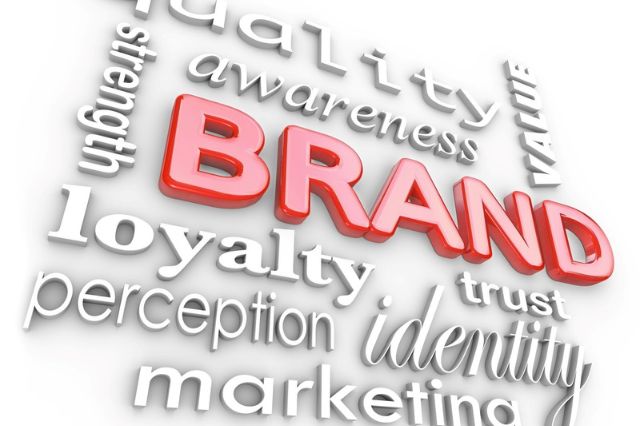When you ask many novice business owners what they want to achieve more—an increase in sales or a boost in recognition—many would likely choose the former. However, this perspective can be a misconception because building brand awareness is just as crucial as achieving high sales levels. Why is that? The reason is that consumers tend to purchase from brands they trust.
If your company is still in the growth phase, it’s crucial to gradually boost your branding. This article provides insights on how to accomplish just that. You’ll discover proven strategies and specialized marketing techniques, including general rules of search engine optimization and the best practices for email design. Keep on reading!
What is brand awareness?
In marketing, brand awareness refers to how well consumers can identify a product by its name. Ideally, it encompasses not just recognizing the brand, but also having positive perceptions of the distinct qualities that make the product stand out from its competitors. As the famous business executive and author Seth Godin once said, “A brand is a set of expectations, memories, stories, and relationships that, taken together, account for a consumer’s decision to choose one product or service over another.” Brand awareness is a complex concept that includes recognition, recall, association, loyalty, overall image, consciousness, equity, market presence, and consistency.

FAQ: What leads to brand awareness?
Companies can try multiple marketing activities like advertising, public relations, and social media campaigns to enhance their brand awareness. In such a way, they can be closer to their customers, leaving a good first impression in consumer’s minds.
5 best ways to increase brand awareness
Since each brand is unique, there are no one-size-fits-all approaches. Before starting to develop your brand awareness, you should explore your target audience, including their preferences, fears, financial conditions, and pain points.
#1 Tell engaging stories using content marketing
There is an incredible story behind every successful brand. Take, for example, Coca-Cola, which was created back in 1886. Even today, it remains a beloved brand for several generations. What’s their secret? Coca-Cola communicates its values through storytelling. You can still see advertising campaigns using their old slogan “Share a Coke”. Moreover, the brand frequently features heartwarming stories about people coming together. This kind of storytelling evokes positive emotions like happiness, nostalgia, and friendship, which have become closely associated with the company.
To create awareness of your brand through storytelling techniques, consider these approaches:
- Try to explain your brand’s values, mission, and uniqueness in your stories;
- Develop strong characters that can be associated with your company;
- Use the following structure in your narratives—introduction, plot, problem-solving, culmination, interchange, and conclusion;
- Make stories that resonate with your target audience’s emotions;
- Share real experiences, challenges, and triumphs;
- Utilize additional visual and audial elements like images, videos, and music.
#2 Stay in sight with PR
Establishing a robust company presence isn’t achieved through aggressive advertising; consumers are more likely to want relationships with brands. This is where public relations (PR) comes in. In the State of the Media Report 2023, the PR software company Cision indicates that companies that excel in their public relations efforts are seven times more likely to be perceived as high-quality brands. This can be easily explained: direct advertising can be felt as pushing products, while PR revolves around effective communication with users.

Let’s explore what PR strategies you can implement to boost brand awareness:
- Media coverage;
- Press releases publishment;
- Event participation;
- Influencer partnerships;
- Social initiatives;
- Community involvement;
- Employee advocacy;
- Thought leadership.
#3 Personalize messages in your email marketing
For many years, email marketing was primarily focused on direct sales, where marketers sent numerous letters to clients, hoping their product would catch their interest. However, such an approach no longer yields the same results. The emphasis has shifted toward building strong relationships, and personalization plays a crucial role. Interestingly, 49% of individuals are even interested in receiving promotional emails from their favorite brands, with a preference for weekly mailing. This illustrates the power of brand awareness; instead of marking your emails as spam, customers now eagerly anticipate your next newsletter.
Here are some tips to personalize your email campaigns:
- Divide your email lists into segments based on demographics, behavior, and preferences;
- Greet your recipients with their names;
- Offer custom product recommendations and content suggestions;
- Set up automated email sequences triggered by specific actions like abandoned carts and product views;
- Use dynamic visuals in your emails to display different content based on the recipient’s profile or behavior.
Since personalization is key, the global email design trends in 2023 are gamification, dynamic content, and interactive elements that should be adapted to your client’s preferences.
#4 Establish strong consistency with aesthetic designs
Based on Stanford University research, 75% of users judge a company’s credibility by its website design. Nonetheless, a website’s appearance is just a small part of a brand. Many companies choose multiple promotional channels, such as social media or banner advertising. To make your business recognizable, consistency is essential.
What does consistency mean in brand design?
- Including your company’s logo in promotional materials;
- Establishing a unique corporate color palette;
- Using the same fonts;
- Incorporating branded visual elements, like shapes and patterns;
- Developing a tone-of-voice for your brand.

FAQ: What is an example of a brand awareness strategy?
A strategy to increase brand awareness can be executed in various ways. Let’s look at how the cloud storage service Dropbox achieved this. As part of its strategy, the company opted for promotion through referral programs. They built an excellent product and incentivized current users to share it with their colleagues and friends in exchange for appealing bonuses.
#5 Build a strong community with social media marketing
Since brand awareness is all about ongoing communication with current and potential customers, social media marketing is the way to go if your company is ready to listen to its audience. According to Forbes, 77% of small businesses use social media to engage with their consumers, and 44% of them prioritize these platforms for building brand awareness.
Social media brand awareness strategy should include:
- Engaging content creation;
- Consistent branding;
- Regular posting;
- Communication with your target audience;
- User-generated content preparation;
- Social media influencer collaborations.
FAQ: How do you attract new customers?
Attracting new customers requires a multifaceted approach. The first thing consumers consider is the quality of your products and services. Then, you can focus on narrow marketing strategies like content production, SMM, and email campaigns to build your online presence. It’s also possible to leverage referral programs, networking, and advertising to expand your reach.
To sum up
Many new brands often prioritize profit and sales growth, but overlook the significance of trust and customer engagement in establishing lasting relationships. Besides, nurturing brand awareness is vital for overall business growth. Although you might not see immediate results, it eventually leads to satisfied customers who are eager to make more and longer-lasting purchases from your company.
